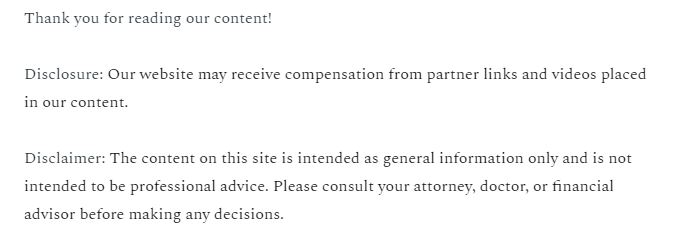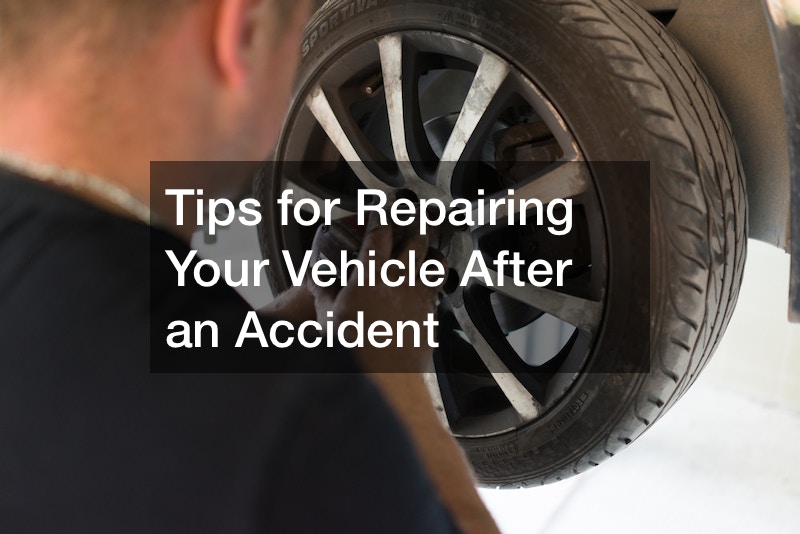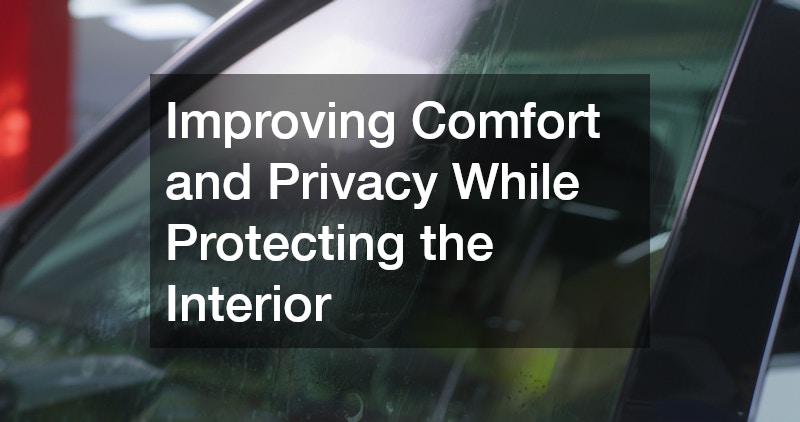
Vehicle accidents are common worldwide, affecting more than 1.3 million people. While your health should be a top priority after a vehicle accident, you also want to get your car into good shape because it’s a huge purchase. So, how do you repair your vehicle after an accident? Which parts of your vehicle are most vulnerable to damage after an accident? Here’s your detailed guide to car accident repair before and after an accident.
Typical Vehicle Damages After an Auto Accident

An auto accident is likely to leave various damages to your vehicle. Some might be visible, while others might require professional inspection to identify the damage. So, even if you can move your car after an accident, it’s essential to take it to a professional mechanic for inspection. Minor damages can quickly be addressed by self or a qualified mechanic.
If you choose the DIY route, ensure you have the necessary skills and equipment, like truck lift kits, to handle the repairs without causing further damage to your vehicle. Here are some of the damage you’re likely to experience after a car accident;
Body Damage
This is one of the most common vehicle damages after an auto accident. And it’s easier to identify vehicle body damage after an accident. An auto accident can leave scratches, dents, or other significant structural damage to your vehicle. Vehicle body damage mainly occurs due to collisions with other vehicles, objects, or rollovers, affecting the car’s exterior appearance.
Glass or Window Damage

Heavy impacts from vehicle accidents can cause windows to crack or shatters. This often occurs during rear-end collisions, head-on collisions, side-impact collisions, and roll-over accidents. The windshield, side, and rear windows are particularly susceptible to damage.
It’s worth noting that glass or window damage should be addressed before driving your vehicle again. This is because the small chips or cracks could compromise your visibility and safety, which could lead to another accident. Driving with a cracked, chipped, or damaged windshield can attract penalties in some states.
Bumper Damages
Bumper damage usually stems from rear-end collisions. Your bumper may become cracked, dented, or completely detached from your vehicle. A more severe accident could compromise the bumper absorption system.
Frame and Alignment Issues
A car accident can damage your vehicle’s frame or chassis, affecting its structural integrity. And when the frame is misaligned, your vehicle’s handling and overall stability could be affected. Therefore, you might need auto alignment to address the issue.
Suspension Damage
Your vehicle’s suspension system ensures a smooth ride and maintains your car’s stability. However, impacts from accidents could damage the suspension components, including struts, shocks, springs, and control arms. A car with damaged suspension will deliver a rough or bumpy ride. Moreover, suspension damage could cause uneven tire wear and compromised handling.
Electrical and Mechanical Damage

Your vehicle’s electrical and mechanical components could suffer hits from an auto accident. This includes the engine, cooling system, transmission, and electrical wiring. So, if your vehicle won’t start after an accident or if it leaks fluid, you might be staring at electrical and mechanical damage.
Car accident repair before and after a collision is essential to maintain vehicle safety and minimize accident risks. Timely repairs and replacements are crucial for maintaining the safety and performance of your vehicle as well as for aesthetic purposes. So, after an auto accident, minor or major, have your professional mechanic inspect your vehicle for any internal and external damage.
What to do After an Auto Accident
An auto accident can leave you frustrated, confused, and in pain. In most cases, victims don’t know what to do next. This is because so many things are going on, plus you’re in pain. So the first thing is always to put your health first.
Sometimes, you may not even be conscious to realize what happened until when you find yourself in a hospital bed. If this happens, you’ll have no control over what happens immediately after an accident.
However, if you’re still conscious after an accident, you must take some crucial steps. First, ensure that you (and your passengers) are alright. If not, request medical help. If there are injuries, do not move the victims out of the vehicle until help arrives. This is because you might cause more harm and pain to the already injured victims.
Document the Damage to Your Vehicle
After ascertaining that everyone is okay from the accident, you can now turn your attention to your vehicle. The first step is to assess and document any damages to the vehicle. If you have a phone or camera, take clear photographs of any visible damage to your vehicle from different angles. Capture both close-ups and wide shots. This evidence will help you file an insurance claim.
This might also be a good time to notify your auto accident attorney about the incident. If you don’t have one yet, you should look for a professional, reputable, and experienced attorney to help you navigate the next steps legally.
Additionally, you should notify your insurance company immediately after an accident, probably before moving the vehicle for repairs. Your insurance company may send adjusters to assess the damages and estimate the repair costs.
Remember, insurance companies have different requirements regarding their policies. So ensure you understand all the requirements and adhere to them to eliminate misunderstandings.
Choose a Reputable Auto Repair Shop

Once you’re done with all the health and legal aspects, it’s time to repair your vehicle. First, you should be careful when selecting an automotive repair shop for your vehicle repair. This is because car accident repair before and after the incident can be challenging.
Therefore, you want someone who understands your vehicle and can repair the damages without affecting your vehicle’s performance and appearance. Also, your choice of a repair shop may influence the outcome of your insurance claim. Here are some factors to consider when looking for a repair shop;
Certifications
When looking for a mechanic to repair your vehicle after an accident, you must ask about certifications and credentials. Certifications such as Automotive Service Excellence (ASE) indicate the repair shop’s expertise in handling your vehicle repairs. It’s also crucial to check for market reviews online. These reviews can help you find a certified, reputable, and reliable repair shop near you.
Location
You should also consider the location of the repair shop. Generally, you want to take your vehicle somewhere close to your home. Therefore, you might consider a local automotive repair shop. Also, it’s easy to find a local repair shop because you know them and they are close to you. However, sometimes you might need to look beyond your local mechanic, especially if they don’t offer quality service, your vehicle model requires specialized repairs, or they lack the equipment and expertise to handle the repairs.
Warranty
Before letting a repair shop work on your vehicle, ensure they offer a warranty for their services. This way, the warranty will cover the expenses if your vehicle develops additional problems resulting from their repairs.
Reviews and Recommendations
A trusted friend or family will only recommend a service or product if they love the experience. Therefore, if you’re looking for an automotive repair shop, ask for recommendations from those close to you. Additionally, visit online review platforms to know what other people recommend.
Obtain Multiple Estimates
Don’t just settle for the first mechanic you find. Instead, request quotes from multiple repair shops and compare prices and services offered. However, you should be wary of significantly low estimates as they may signify subpar quality or the use of inferior replacement parts.
Also, don’t go for significantly high priced-services. Instead, you want to balance quality products and services and affordability. This is essential for a car accident repair before and after the incident.
Ensure the Use of OEM Parts
If your vehicle requires replacement parts, such as windshield replacement, insist on using Original Equipment Manufacturer (OEM) parts. These parts are designed specifically for your vehicle’s model and make. They ensure optimal fit and performance.
While non-OEM or aftermarket parts might seem cheaper, they can compromise safety and affect your vehicle’s resale value. So if your mechanic doesn’t have OEM parts, it’s better to source them elsewhere and bring them for installation.
Which Service Does Your Vehicle Need?
There are various services for car accident repair before and after an incident. So, before taking your damaged vehicle to a repair shop, ensure you understand the type of service it needs. Some repair shops claim they offer all vehicle services, including auto exhaust repairs. Others specialize in a specific repair service.
For instance, if your vehicle requires a diesel engine service, you should choose a mechanic that specializes in this type of vehicle service. Such professionals have the knowledge, skills, experience, and tools to handle your vehicle repairs. Other services like auto windshield repair might also require professional repair services.
Consider Automotive Painting and Detailing
Once your vehicle has been repaired and is in good condition, you need to restore its aesthetic appearance. Remember, an auto accident can leave dents and scratches on your vehicle’s exterior, which could affect its appearance.
First, consider a paintless dent removal service to restore your car’s body to factory-like condition. This service saves you time and cost while helping you remove dents, dings, creases, and hail damage from your vehicle. The process utilizes specialized tools to press and massage the damaged part, pushing the dented metal out. This restores the original shape of the dented part without needing any paint. Also, hire an auto detailer to inspect your vehicle, buff it, or wax its exterior for extra protection. Car detailing services helps extend your vehicle’s life.
How Much Does a Vehicle Service Repair Cost?
Car accident repair before and after incident costs vary depending on multiple factors. For instance, the extent of the car damage can significantly influence how much you pay for the repair services. A windshield replacement will typically cost more than a bumper repair.
Moreover, your vehicle type and model, the location, and the repair shop you choose will influence the cost of your car repairs. Therefore, you must consider these factors for your car accident repair before and after the incident. Also, you should consider additional costs such as taxes, labor charges, and fees for your car accident repair before and after an incident. Some repair shops won’t include these costs in their quote.
Therefore, you should request accurate estimates from a reputable repair shop to know how much the repairs will cost. The repair shop will assess the damage before offering a detailed estimate of the costs.
Auto Maintenance Tips
So you’ve completed your car accident repair before and after the incident and are excited to get back on the road. However, it’s not all done yet. You still need proper maintenance to keep your vehicle in good condition. It’s also ideal for your vehicle’s performance, longevity, and safety. So how do you keep your vehicle in good condition?
- Regular oil changes
: Regular oil changes help lubricate the engine and minimize friction, ensuring optimal engine performance and longevity. Remember, oil affects almost every function of your car. Therefore, you should regularly change your oil (and oil filters) based on your manufacturer’s instructions.
- Tire maintenance
: Check tire pressure regularly and ensure it’s up to the recommended levels. Also, check your tires for signs of wear or damage and replace them when needed. This should also apply to the spare tire.
- Keep your vehicle clean
: This is a basic yet essential vehicle maintenance tip. Washing and waxing your vehicle protects your paint from damage while keeping it looking fresh. You must also clean your vehicle’s interior to maintain a pleasant and healthy environment.
- Check your braking system
: Vehicle brake pads wear over time and need regular replacements. Check for signs like unusual noises and changes in braking performance.
Have you been involved in an auto accident and wondering what to do next? We hope these tips will help you navigate the car accident repair before and after the incident. Remember to contact a professional mechanic for all your vehicle repair needs. Also, always stay safe while driving.


